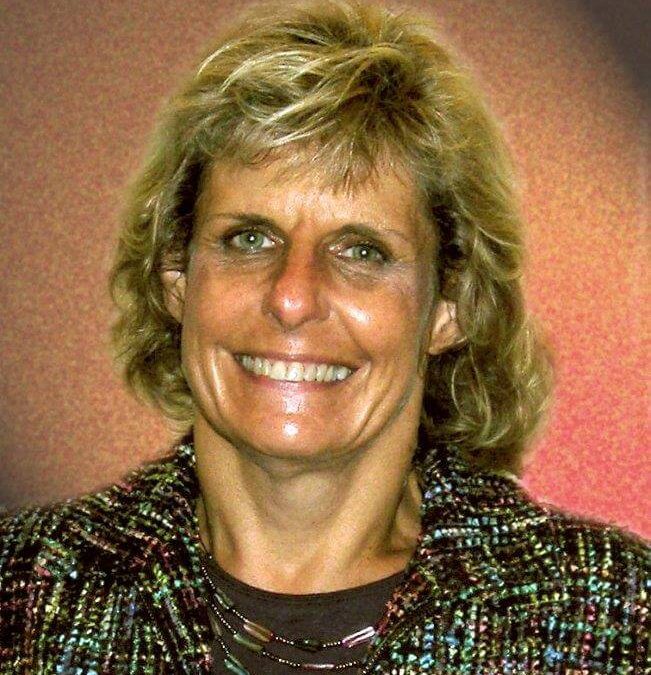
by Elizabeth Hines | Sep 5, 2016 | Blog, Leadership, Strategy, Talent
Some companies include failure as a performance metric, but establishing a culture of innovation is a better inflection point for success.
Media executive Jason Seiken is known for taking the Washington Post online and for turning PBS into a digital media powerhouse. Several years ago, he wrote an article, How I Got My Team To Fail More, which described his efforts at PBS to create an entrepreneurial culture by requiring members of the digital team to fail. Seiken wrote:
“Soon after arriving at PBS, I called the digital team into a conference room and announced we were ripping up everyone’s annual performance goals and adding a new metric. Failure. With a twist: ‘If you don’t fail enough times during the coming year,’ I told every staffer, ‘you’ll be downgraded.’ Because if you’re not failing enough, you’re playing it safe. The idea was to deliver a clear message: Move fast. Iterate fast. Be entrepreneurial. Don’t be afraid that if you stretch and sprint you might break things. Executive leadership has your back.”
Five years after introducing the failure metric to PBS, unique visitors to PBS.org doubled, and in each of the first seven months of 2013, PBS.org was the most-visited network TV site (beating out ABC, CBS, NBC, and Fox). Additionally, video views on PBS.org and PBS.org’s mobile platforms rose 11,200%.
Was requiring failure the key to success? Not all those who read the post believed so. Rather, many readers suggested that the creation of a culture of innovation, one supported by executive leadership, was the inflection point for success.
The idea that innovation in business or an entrepreneurial culture is brought about by leadership is one put forth by many, including Robert J. Herbold. In his book What’s Holding You Back: 10 Bold Steps that Define Gutsy Leaders, Herbold submits that it is the responsibility of a leader to establish a culture of innovation. That is, a leader must communicate a goal of innovation to his/her employees; encourage employees to aspire to innovation; reward innovation; and instill a sense of urgency.
I see innovation and entrepreneurism as the goal and not failure. For this reason I believe the focus should not be on failure, but instead should be establishing a culture which supports innovation. Yes risk-taking and failure are likely components of innovation, but they are just that — components. “Requiring failure” may be sexy, but I believe supporting innovation is more likely to be the game changer.
What do you think? Is failure a requirement for success? Should leadership focus on encouraging failure?
Related posts:

by Elizabeth Hines | Aug 25, 2016 | Blog, Data/Analytics, Leadership, Strategy
Forget tracking traditional metrics and focus on decision-quality data that helps front-line managers do their jobs.
It’s safe to say that the clients I engage with fall into two categories when it comes to business data: those that are drowning in it, and those that ignore it altogether.
The ones that are drowning in data know all the relevant facts that keep them out of trouble with their boards or their senior executives, but struggle to tell you what really drives their business costs or profits. The ones that ignore the data are the savvy veterans that rely on their historical win/loss records in their business, but ask them to change course or innovate, and they are like fish out of water.
Chances are you’ll fall somewhere close to those two camps, and for some time, I did as well. Then that I realized that tracking data for the sake of “tracking” was a waste of time for me and for my teams.
There is data, however, that should be tracked relentlessly and used in all of your decision processes. I call this “decision-quality” data. These are the numbers that drive your business strategy and execution.
What is decision-quality data?
Decision-quality data goes beyond the traditional profit/loss packages that are churned out every quarter and disseminated to your business chieftains. Decision-quality data sets are the building blocks and the levers of your business. Examples include areas of your business that can be affected by the execution of your employees.
Put simply, your sales employees may not be able to directly affect your finance treasury function, but working together with your finance team, they can affect cash flow by selling credit-worthy customers, cutting better financial deals, and, when necessary, helping in the collection process.
The same can be said of your purchasing professionals teaming with distribution leaders and finance team. This team can coordinate at the front line to cut costs and reduce inventory spend by developing inventory and financial metrics that matter to them and the company overall. By working in concert, they have the ability to solve the problems that arise and avoid pitfalls in real time instead of reacting when the quarterly metrics come out.
Quite frankly, if you are collecting and looking at data, but not taking action as the result of it, STOP. You won’t miss a thing, and your team will thank you for saving them time to spend on more productive activities.
Don’t fall into the data-cycle-trap dictated by data tracked on a calendar basis for the sake of tracking. Ask your teams what data they need to be effective, and simplify the way for them to get it in near real time.
Once this type of data is in the hands of a cross-functional team of front-line managers, task them with the needed improvement, and watch them make dramatic impacts in your overall business performance and customer experience and, in turn, your profits. The results will be better and more sustained than if you drove them with a mandate from the top because these managers live and breathe in the environment that created the data in the first place. Their cross-functional nature and familiarity with the issues are a winning combination.
Related posts:

by Fronetics | Jul 28, 2016 | Blog, Diversity, Leadership, Logistics, Strategy, Supply Chain
In an interview with Kate Lee, Saunders discusses her career in the logistics industry and key issues within the supply chain.

Kelli Saunders is president of Morai Logistics.
The percentage of female CEOs in the Fortune 500 declined from 4.8% in 2015 to 4.2% in 2016. Canada, too, has realized a decline: 8% of the highest-paid executive positions are held by women, down from 8.5%. Research conducted by Gartner in April 2016 finds that for the supply chain industry, “the percentage of women in leadership positions decreases as the corporate ladder rises.”
It was a “fluke” that Kelli Saunders found the supply chain industry. More than 30 years later, Saunders is president of Morai Logistics Inc., an Authorized Agent of Mode Transportation. I sat down and talked with Saunders about her career and her perspective on women within the supply chain industry.
How did you find the supply chain industry?
It was a fluke. I was just out of college and needed a job. I found an ad in our local paper for a telemarketer, and I applied. I was hired as a telemarketing supervisor for a Canadian intermodal marketing company (IMC).
The man who owned the company focused on his employees. He taught us how to read a balance sheet and an income statement. He taught us the difference between added value and value added. And he taught us the industry. He had us climbing into trucks and railroad yards so that we could truly understand the industry.
When his wife sadly passed away, he decided to sell the company. He allowed six of us to become majority shareholders.
Fast forward sixteen years. The company has been bought and sold many times. I’ve stayed with the company through this process. Each time the company changed hands, my role changed, exposing me to different aspects of the business. Six years ago I bought the company back and now serve as president.
Your first boss sounds like he was a pretty incredible person.
He was. And now it is my turn. It’s my turn to give back.
I am a big believer in millennials. Their energy is contagious. I strive to be a mentor to them, and to let them know that they can dream big.
You’ve been in the industry for more than 30 years. What changes have you seen?
The industry is becoming more diverse, and more women are entering the industry. That being said, there is a still a long way to go. A big challenge is getting women and minorities to recognize that the supply chain industry is an option.
Tell me more about this.
Women don’t seem to recognize that there are incredible opportunities in the supply chain industry. The industry needs to do a better job at sharing what is happening — what the industry is all about. People think it is dull and boring; it’s not.
The supply chain industry is not just about getting things from point A to point B. The industry is an entire sophistication of infrastructure. There are so many aspects that we take for granted. Streamlining the chaos within the industry is incredibly rewarding.
How can this problem be addressed?
We need to get out and talk to more people. We need to go into the schools; we need to make connections and have conversations. Companies need to share their stories more widely. It is all about getting the word out there.
What advice do you have for people who do enter the industry?
Surround yourself with the best of the best. This is true when it comes to your colleagues, your employees, your vendors, your clients — everyone. This not only makes life more enjoyable, it has an impact on the bottom line.
Interestingly, 75% of the staff at Morai Logistics are women. This is not by design. By seeking out the best of the best, it just happened.
As a mentor, what advice do you give?
Dress for the job you want, not for the job you have. But I am not talking just about clothes. I am talking about your mental state, your body language, the quality of the work you produce. Visualize the job you want and portray that in all you do.
I also tell people to always be honest, respectful, and ethical. These characteristics are essential.
Getting the right product to the right place at just the right time is a complicated business. Kelli Saunders, CEO of Morai Logistics, understands the complexities and nuances involved in long term sustainability in the logistics industry. This is why the company she leads is the successful multimillion dollar, multinational business that it is today.
Kelli’s experience in the supply chain and logistics field is extensive. During her 30 years in the industry, she has been recognized for her strategic selling, relationship development, and management throughout North America. She started from her humble beginnings as a telemarketing supervisor for a Canadian 3PL provider to creating Morai Logistics Inc.
Since then Kelli has received numerous awards for her expertise in strategic sales. She has shown consistent impact in the industry by being awarded Salesperson of the Year numerous times, and was the former president of the Toronto Transportation Club. As a certified diversity supplier, her company has received WeConnect Canada’s Doing Business International Award and WBE Canada’s Doing Business Award as a woman-owned business.
Aside from assisting her clients with services including warehousing, management consulting and technology services through Morai Logistics, Kelli’s drive also shines through in her other passions.
She is an active member of the Women Presidents Organization, WeConnect International, and WBE Canada. Kelli strives to inspire women by telling her story and sharing her lessons at talks to support fellow female entrepreneurs. She also takes time to enjoy spinning, running, golf, and travelling. Her motivation and drive shows in her company’s performance and inspires her team to succeed.
Related posts:

by Fronetics | Apr 18, 2016 | Blog, Leadership, Marketing, Supply Chain
 Hailey McKeefry began her career in the supply chain industry in 1990 as an intern at EBN. After quickly rising to the position of assistant editor, McKeefry left EBN and the industry to cover enterprise computing. In 2012, she returned to the supply chain and to EBN as managing editor, and in 2014, she was promoted to her current role, editor in chief.
Hailey McKeefry began her career in the supply chain industry in 1990 as an intern at EBN. After quickly rising to the position of assistant editor, McKeefry left EBN and the industry to cover enterprise computing. In 2012, she returned to the supply chain and to EBN as managing editor, and in 2014, she was promoted to her current role, editor in chief.
McKeefry’s decision to return to the supply chain industry was driven by the changing perception of the industry and an interest to get involved.
“I saw that the supply chain as a topic was taking center stage in the business world. Companies like Apple, Cisco and others live and die by their supply chain decisions. Clearly, procurement and supply chain now have a seat at the strategic table and are making real bottom-line contributions that are being recognized and valued.”
Four years later, McKeefry remains enthusiastic about the industry and about her role:
“I love the work because it provides an opportunity to talk about people, processes and technology, and to tackle a variety of topics from sustainability and human rights to technology and good business practices. I enjoy the opportunity to create room for important conversations around leveraging new technology, managing risk, and implementing good business practices.”
Women in the supply chain industry
While there remains a gender gap in the supply chain industry, progress has been made. McKeefry is a clear example of progress. Her internship at EBN in 1990 was a “minority internship,” and today, 26 years later, she holds a leadership position within the company.
McKeefry is not alone. At industry events McKeefry sees more female faces than she used to, and she has started to see women in high-powered positions. She points to: Dawn Tiura, CEO of the Sourcing Interest Group (SIG), Deborah Wilson of Gartner, Christina Ruggiero, CPO of Coca-Cola Refreshment, and Jennifer Moceri, senior vice president/chief procurement officer at Tate & Lyle.
In March McKeefry interviewed Fluke Electronics’ Amy Georgi, the first woman to be named the Megawatt winner in the 30 Under 30 Rising Supply Chain Stars recognition program, a jointly sponsored initiative of ThomasNet and Institute for Supply Management (ISM).
McKeefry believes that the changes within the supply chain industry are largely being driven by a “high-level awareness of the importance of closing the gender gap and, more importantly, efforts by many organizations to create opportunities to attract and retain female talent.” Another driving force McKeefry points to is research which shows that organizations with female leadership, or at least a board that has a good gender balance, do better financially.
“Forward-thinking organizations,” points out McKeefry, “are creating opportunities for women by providing mentors and role models, opportunities for advancement, and a chance to think creatively about how jobs are structured.”
“What’s important to note,” McKeefry continues, “is that all of this is also on the wishlist for millennial workers, as well, making it a solid business strategy.”
Despite these positive changes, McKeefry shares that young women still have a hard time finding a female role model and mentor in the supply chain industry. She notes that “it becomes a chicken-and-egg situation of women needing role models before they can become role models themselves.”
What advice does McKeefry have for women considering entering the industry?
“Don’t be afraid to pursue leadership positions and to embrace your own gifts, strengths, and experience to the industry. Make sure that the organization knows (in bottom-line dollars and cents) how supply chain professionals are contributing in strategic ways to the bottom line of the organization, and about how your leadership is part of that. It’s been well documented that quietly contributing doesn’t move a supply chain career forward.”
As a broad generalization, women contribute in unique ways to building the critical relationships within the organization, and that can’t be underestimated. In short, I don’t think women in the supply chain industry should emulate men, but instead should leverage the unique qualities that they bring to the good of the organization.
Relevant articles by McKeefry:

by Fronetics | Apr 7, 2016 | Blog, Leadership, Logistics, Strategy, Supply Chain
 As part of our series on trailblazing women in the supply chain industry, I interviewed Barbara Jorgensen, co-founder and managing editor, Electronics Purchasing Strategies (EPS). Jorgensen has more than 20 years’ experience as a journalist, working for leading electronics industry publications such as Electronic Business, Electronic Buyers’ News, and EDN.
As part of our series on trailblazing women in the supply chain industry, I interviewed Barbara Jorgensen, co-founder and managing editor, Electronics Purchasing Strategies (EPS). Jorgensen has more than 20 years’ experience as a journalist, working for leading electronics industry publications such as Electronic Business, Electronic Buyers’ News, and EDN.
As a freelance writer, Barb wrote and managed an award-winning custom publication for Sager Electronics; was a leading contributor to Avnet Global Perspectives magazine; was a regular columnist for the National Electronics Distributors Association monthly newsletter; and wrote for industry associations such as IPC. Barb was also a featured blogger on the B2B Website Allbusiness.com and helped launch Electronics Sourcing North America, a start-up magazine serving purchasing professionals in the Americas.
Prior to her freelance career, Jorgensen was a senior editor at Electronic Business, the pre-eminent management magazine for the electronics industry, featuring world-class manufacturing companies such as Dell, Hewlett-Packard, Cisco and Flextronics International. Before joining EB for the second time, Barb spent six years with Electronic Buyers’ News as managing editor, distribution, winning several awards for coverage of the distribution beat. A graduate of the University of Binghamton, Barb began her journalism career with the Gannett newspaper chain. She has worked for a number of local newspapers in the Greater Boston area and trade journal publishers Reed Business Information and UBM.
How long have you worked in the supply chain industry?
I’d measure my specific supply chain experience with the publication of my first feature on electronics distribution in 1989. After copy editing for a leading electronics industry magazine for a couple of years the editors suggested I use my journalism experience to do some writing. I profiled Marshall Industries, a top-tier distributor at that time, and its founder, Gordon Marshall, who passed away last year.
How did you choose (or end up) working within the industry?
In high school and college, I specialized in journalism and had been writing features and covering town government for a Boston-area daily newspaper. The schedule was grueling, so I applied for work at a trade magazine publisher. This eventually led to being assigned the electronics distribution beat. I made it my goal to understand the business inside and out, and that expertise helped establish my credentials in the industry.
Two of the leading distributors now generate revenue in excess of $20 billion per year; I was calling on them before they reached their first $1 billion.
Although I never expected to become an expert in the electronics supply chain, the growth of the industry and my expertise has enabled a solid career path.
Let’s talk about EPS. How did EPS come about?
Electronics Purchasing Strategies – soon to be called EPSNews – was driven by several external events taking place in trade publishing. A few years prior to EPS, which started publishing online in 2013, the last purchasing publication in the industry closed its doors. Trade publishers were also laying off editors as they moved more content online. My two colleagues and I – Gina Roos and Bolaji Ojo – found ourselves unemployed all at the same time.
Given the under-representation of purchasing in the trade media, we decided to come together and start an online publication. Our reputation in the electronics industry helped us secure our first advertisers. We have been fortunate enough to support the publication primarily through advertising and newsletters since.
Where is EPS today?
While we were assessing our business model after three years we discovered we weren’t keeping pace with some of the dynamics of online publishing. Although our content has always been well received we weren’t getting as much ‘bang for the buck’ as we should have vis-a-vis SEO because of the way we developed our site. Although our content won’t change—we are focused on deep analysis of the entire supply chain from design through recycling – emphasizing the news aspect of our coverage will attract a wider audience and result in better organic growth.
Revenue-wise we have grown every year since our inception; 2015 was our best year so far, growing in the mid-double-digits.
What goals do you have for the company?
We’d like to expand. Our audience has largely been based in the U.S. because that is the market we know best, but clearly electronics procurement in the Far East continues to expand. The electronics markets in Europe remains steady and, let’s face it, the supply chain is global. So EPSNews would like to devote resources toward building an audience in the EU, the Far East, and relevant geographies in between.
Have you seen a change in the number of women entering the industry and/or contributing to the industry?
Absolutely. When I began my writing career in the tech industry there were fewer women in trade publishing – most of the women I networked with then were in marketing and PR. But that changed pretty rapidly at least on the media side during the 1990s. I’d say by then there was a 50-50 split between women and men in key editorial positions. In the electronics industry, however, there were few women executives. The first woman CEO of a major distribution company was Harriet Green, named CEO of Premier Farnell in 2006. Prior to that there were a handful of women in C-level positions – I know if I mention names I will forget someone – which was extremely encouraging. These days I see more women at industry forums such as EDS and at the ECIA conference than ever before, and they are in management positions.
Have you seen a change in the positions women hold within the supply chain industry?
Again, absolutely. Women are holding higher positions in management within my ‘world’—electronics distribution – but even more so within the online/social media companies such as Yahoo that have become so important to all of us. I also recently attended a presentation by a woman who headed the high-tech entrepreneurial business within Foxconn – a Chinese EMS company – who has since moved to Flex.
Any advice for women considering entering the industry?
My advice would be the same for anyone—learn as much as you can upfront. In business journalism, I had to interview CEOs and MBAs and at the beginning that was intimidating. I finally overcame that fear by reading everything I could about the company, the industry and the executive in advance, and I also asked ‘dumb’ questions of people I trusted. I also found that admitting what I didn’t know never hurt me: even the highest executives in the industry were willing to take the time to explain many of the things that make this industry unique. I think in general people are always willing to give someone a ‘hand up.’ I also found that companies like to work with writers that took the time to learn about their business. Knowledge and professionalism are guidelines I’d recommend for anyone.
On a broader level, what trends do you see within the industry?
I think right now there is a lot of turmoil regarding the supply chain as we know it and the implications of conducting business digitally. This applies to how companies work internally and how they are going to market. The supply chain has done a pretty good job at adopting technology to improve internal operations – we haven’t had an inventory glut since 2001. Externally it’s another matter. E-commerce unintentionally set off huge problems in counterfeiting. We are still trying to figure out where social media fits: it looks like ‘free’ advertising – you can generate a lot of attention with a tweet – but you don’t always control your message. Look at the mistakes people make that go viral.
Then there is managing the supply chain online. Business practices within the electronics supply chain haven’t kept up with technology. For example, supplier franchises are still granted on a regional basis – less so than before – but online business doesn’t have any boundaries. I think we are going to see common supply chain practices change as technology accelerates. Geographic boundaries are already crumbling, and there are practices such as ship-from-stock-and-debit; inconsistent global pricing; and demand-creation compensation that are simply inefficient. There’s little room for inefficiency in the digital supply chain.
You may also be interested in:

by Fronetics | Apr 4, 2016 | Blog, Leadership, Strategy

A recent study shows the most successful companies had leaders with these four traits in common.
What executive leadership skills really matter in terms of a company’s growth and success? Are there distinguishing characteristics among executives whose organizations succeed versus those who fail?
One recent decade-long study of executive transitions, published in the Harvard Business Review, provides a closer look at why failure rates for companies remain high in spite of strong leadership. The authors’ goal was to determine if there are certain common traits among leaders which positively impact organizational performance.
After thousands of interviews, an in-depth statistical analysis, and a study of countless historical performance reviews, the authors identified four recurring traits of successful executives. Possession of two or three of the traits correlated to some success, while mastery of all four traits led to the greatest success for the leaders and their companies.
The Four Characteristics of Exceptional Executives
So, what made these executives achieve great success? Here is a breakdown of what matters most:
1. They understand all aspects of their business.
Exceptional executives possess in-depth knowledge of all the intricacies of their businesses and how each piece meshes together. Upon arrival into the C-suite, they push aside old cognitive biases in favor of leading with openness and a drive to learn more. These executives broaden their exposure to all parts of their organization and take on a variety of cross-company assignments to increase their understanding of the business. This helps them identify weaknesses in the organization’s seams, improve daily operations, limit fragmentation, and keep the company competitive.
2. They are solid decision-makers.
Successful executives know how to weigh the available information, gather additional knowledge when necessary, and use gut instinct to make good, educated decisions. Good decision-makers are hard to come by: A McKinsey survey of 2,207 executives showed that only 28% thought their company made generally good strategic decisions, and a whopping 60% thought that bad decisions occurred as often as good ones. Exceptional executives also have the ability to discuss their viewpoints, engage others to share their thoughts and ideas, analyze data for further insight, weigh the alternatives, own their decision, and communicate the decision clearly.
3. They have a thorough knowledge of their industry.
The most successful executives know every aspect of their company’s industry. The have a solid grasp of the ever-changing landscape of their business, including who their competitors are and why. They know what makes their business stand out above the crowd, how to remain competitive, and how their business answers customers’ needs. Top executives possess a contextual intelligence about their industry and their place in it.
4. They form meaningful relationships.
Top executives demonstrate concern beyond the company’s results by showing genuine care for their colleagues, from shareholders and superiors to direct reports and customers. They are able to communicate in compelling ways and form relationships beyond the superficial. Exceptional executives instinctually know how to form mutually beneficial, trusting relationships. One study that supports this theory found that poor relationships occur at a very high percentage within executive failures.
The good news is all of these traits, once identified, are easy to learn and address. Look at which of these four traits might be hindering your success the most and begin there. By taking the steps to educate yourself, change your habits, and perhaps refine your approach, you could increase your positive impact on your organization’s success.
Related stories:








